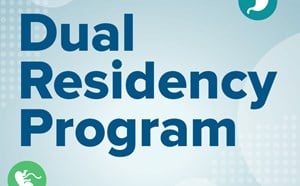
Career Options after Dual Training
Travel and reading are my two favorite hobbies. On my international trips, I make it a point to set aside some time to visit local hospitals and Emergency Departments and learn about different health care delivery models. When I introduce myself as a dual trained physician in both Emergency Medicine and Internal Medicine, one question always pops up. Since a combined training makes a lot of intuitive sense, so how come there are so few combined EM/IM residency programs in the US? I do not have a good answer except a guess that the extra two years of training may be a deterrent to medical students already saddled with huge debts.
The broad training exposes the combined resident to the entire spectrum of acute, subacute and chronic patient care, making them ideally suited for a role in a variety of settings including hospital administration, utilization management, quality, safety, research and resident education. The changing landscape of medicine with its emphasis on cost and delivery reform has created another unique opportunity for the dual trained physician - the observation unit (OU). I feel that every combined graduate can easily step into the role of an OU director and provide unmatched value and direction. I have always maintained that diversification in a career is key to longevity and happiness.
Since there are so few dual trained physicians, once a resident graduates, it is not easy to find a job posting that fits their skill set. There is seldom a template or menu of options to choose from. This leaves the onus on the resident to create their own dream job while negotiating for a position. If you play it well, you can pretty much write your own ticket. The first step is to determine what is your ideal mix of EM, IM and administrative time. Next, while interviewing for a job, do not be shy about tooting your own horn. Most places are not familiar with benefits of hiring a dual trained physician and it is up to you to educate them. This is the time to sow the seeds of what you would like to eventually be doing. All your ideas may not appeal at the first interview - so leave the door open and be flexible. You will most likely get invited for a second interview. The second look has to be carefully planned. You will need to request to meet as many key players in the hospital has possible; this includes the CMO, CEO, CFO and CMIO, etc. Remember, these individuals think globally and have access to discretionary funds that are not available to individual department Chairs. You will most likely want to split your time between EM and IM departments, but there may be a salary difference in what is paid per hour for EM versus IM (which is a very common scenario). If the big dogs see value in hiring you, they will come up with creative solutions to make you whole - either by giving you an additional stipend or creating a part time administrative/leadership role for you.
Often, there will be an interest in hiring you but the leadership needs time to come up with a suitable package. In the meantime, the individual EM and IM departments may be short staffed with several qualified candidates on the waiting list. If such a situation arises, I suggest you take a leap of faith and accept what is available rather than lose out to someone else. Be persistent, and in a year or two you can almost certainly fashion your dream job. I have seen this happen multiple times to the combined residents that I have mentored as well as in my own career. Einstein used to say, “Compound interest is the most powerful force in the world.” He should have added “perseverance” to the list.
Pawan Suri, MD



